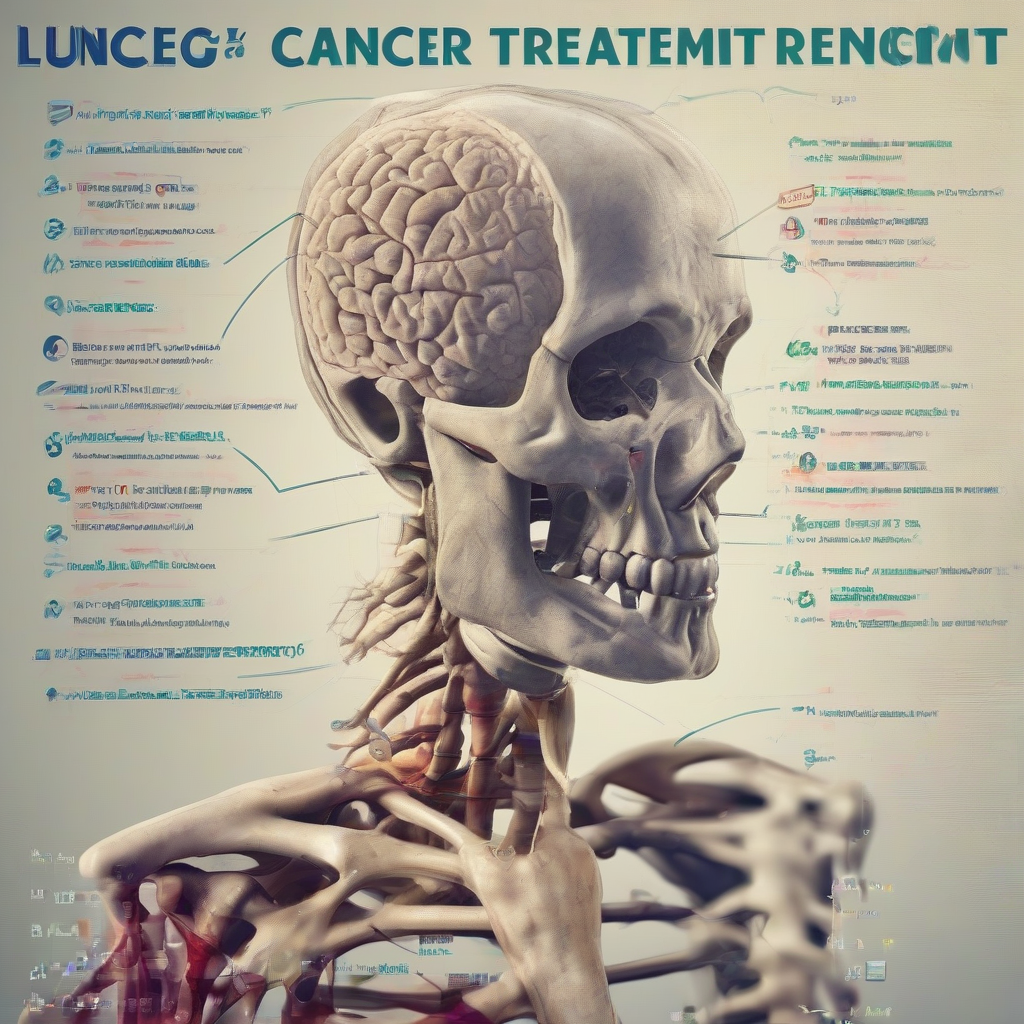Navigating Stage 4 Lung Cancer: A Comprehensive Guide to Treatment Options
Stage 4 lung cancer, also known as metastatic lung cancer, signifies that the cancer has spread beyond the lungs to other parts of the body. This diagnosis presents significant challenges, but advancements in medical oncology have led to a wider range of treatment options aimed at managing the disease and improving quality of life. This guide provides an overview of these treatments, emphasizing the importance of personalized approaches tailored to individual patient needs and circumstances.
Understanding the Complexity of Stage 4 Lung Cancer
The heterogeneity of lung cancer is a crucial factor in treatment planning. Stage 4 lung cancer encompasses a broad spectrum of disease characteristics, including:
- Cell type: Non-small cell lung cancer (NSCLC) and small cell lung cancer (SCLC) require different therapeutic strategies.
- Tumor location and extent of metastasis: The sites of metastasis significantly influence treatment choices and outcomes.
- Patient’s overall health and performance status: A patient’s physical condition and ability to tolerate treatment are key considerations.
- Genetic mutations and biomarkers: The presence of specific genetic alterations can guide the selection of targeted therapies.
Given this complexity, a multidisciplinary team approach is essential. This team typically includes medical oncologists, thoracic surgeons, radiation oncologists, pulmonologists, pathologists, and palliative care specialists.
Treatment Modalities for Stage 4 Lung Cancer
The goal of treatment for stage 4 lung cancer is typically to control the disease’s progression, alleviate symptoms, and improve quality of life. Cure is often not achievable, but significant advancements have extended survival and improved patient well-being.
1. Chemotherapy
Chemotherapy remains a cornerstone of treatment for stage 4 lung cancer, both for NSCLC and SCLC. Various chemotherapeutic agents are available, often administered in combination regimens. The choice of specific drugs and their dosages are carefully selected based on the patient’s individual characteristics and the type of lung cancer.
- Platinum-based doublets: These are commonly used as first-line therapy for both NSCLC and SCLC.
- Targeted therapies: These drugs specifically target cancer cells based on their genetic mutations, significantly improving outcomes for patients with certain genetic alterations.
- Immunotherapy: These drugs work by boosting the body’s immune system to attack cancer cells. They have revolutionized the treatment landscape for several types of lung cancer.
2. Targeted Therapy
Targeted therapies are designed to inhibit specific molecules involved in cancer cell growth and survival. These therapies have dramatically altered the prognosis for patients with certain genetic mutations, such as EGFR, ALK, ROS1, and BRAF mutations.
- EGFR tyrosine kinase inhibitors (TKIs): These are highly effective for patients with EGFR mutations.
- ALK TKIs: These are used for patients with ALK rearrangements.
- ROS1 TKIs: These are effective for patients with ROS1 rearrangements.
- BRAF inhibitors: These target BRAF mutations, which are less common in lung cancer but still clinically relevant.
3. Immunotherapy
Immunotherapy harnesses the power of the patient’s own immune system to fight cancer cells. Immune checkpoint inhibitors (ICIs) are a major breakthrough in cancer treatment, blocking proteins that prevent the immune system from attacking cancer cells.
- PD-1 inhibitors: These are widely used in stage 4 lung cancer, often in combination with chemotherapy or targeted therapies.
- PD-L1 inhibitors: These also block immune checkpoints and show significant activity in certain lung cancer subtypes.
- Combination immunotherapy: Combining different ICI agents or combining ICI with chemotherapy or targeted therapies can enhance efficacy.
4. Radiation Therapy
Radiation therapy uses high-energy radiation to kill cancer cells. In stage 4 lung cancer, it’s often used to alleviate symptoms caused by metastases, such as pain or bleeding. It can also be used in combination with other treatments.
- Stereotactic body radiation therapy (SBRT): A highly precise form of radiation therapy that delivers high doses of radiation to small areas.
- Palliative radiation therapy: Used to manage pain and other symptoms caused by cancer spread.
5. Surgery
Surgery is generally not curative for stage 4 lung cancer because the cancer has already spread beyond the lungs. However, surgery may be considered in specific circumstances, such as removing a particularly problematic metastasis causing significant symptoms. This is often done in conjunction with other treatment modalities.
6. Supportive and Palliative Care
Supportive and palliative care are crucial throughout the treatment journey. These services address physical, emotional, and spiritual needs to improve quality of life. They can significantly reduce pain, nausea, fatigue, and other side effects associated with cancer treatment.
- Pain management: Effective pain management strategies are critical for improving patient comfort.
- Symptom management: Addressing other symptoms like shortness of breath, cough, and fatigue.
- Emotional and psychological support: Counseling, support groups, and other resources to help patients and their families cope with the emotional challenges of cancer.
- Spiritual support: Addressing spiritual and existential concerns.
Clinical Trials
Participation in clinical trials offers access to cutting-edge treatments and contributes to advancing knowledge about lung cancer. Patients should discuss the possibility of enrolling in a relevant clinical trial with their oncologist. These trials often offer novel therapeutic approaches that may not be available otherwise.
Personalized Treatment Approaches
The optimal treatment plan for stage 4 lung cancer is highly individualized, considering various factors. A multidisciplinary team carefully evaluates the patient’s specific characteristics, including:
- Type and stage of lung cancer: NSCLC versus SCLC and the extent of metastasis.
- Genetic testing results: Identifying actionable mutations to guide targeted therapy selection.
- Patient’s overall health and performance status: Assessing the patient’s ability to tolerate treatment.
- Patient preferences and goals of care: Incorporating patient values and preferences in shared decision-making.
Conclusion (Omitted as per instructions)

